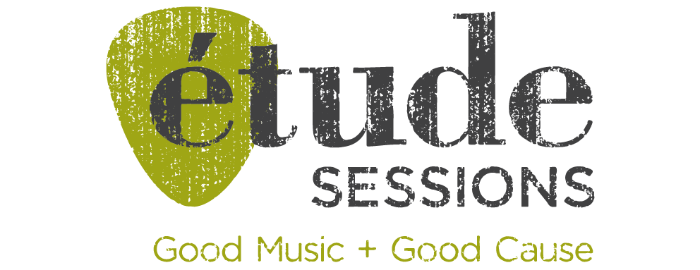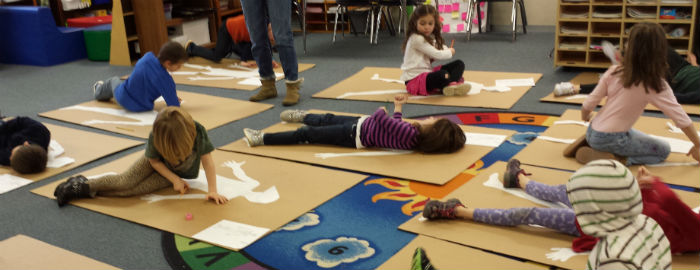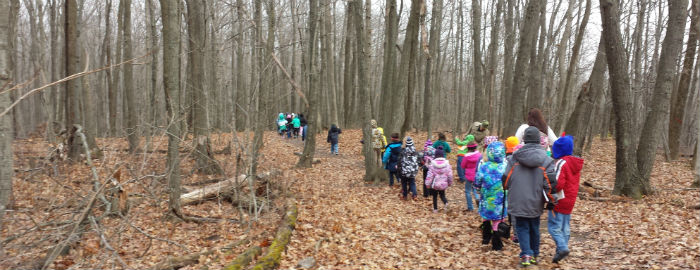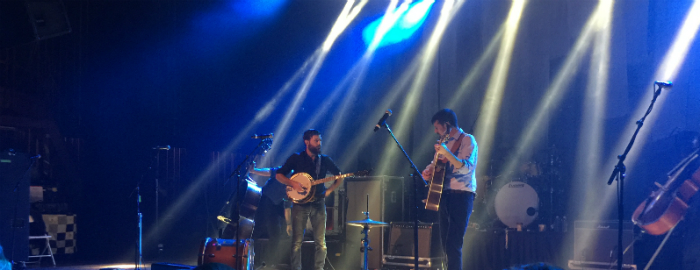by: Ted Hamm
Charter Contract Renewal
Dear Parents, Students, Staff, and Friends,
On Tuesday, February 4th at 7:00 p.m. the Board of Education will be taking action on the next five year contract for ESAA, The Mosaic School, and IDEAS Academy. Earlier this week, I wrote an overview blog about our upcoming contract renewal. Part of the value we offer to the Sheboygan Area School District is choice. It is part of my belief that school districts should have diverse offerings that meet the needs of the diverse communities they serve.
As a charter school, we offer unique K-12 learning opportunities with our focus on nurturing creativity through school culture and authentic projects. While there is much more to our identity as a group of schools than being a charter school, we are grateful to be part of an educational landscape that offers choices for families in Sheboygan. We support all of these choices, especially those who share our commitment to admitting all students and building a learning community as diverse as the city we serve.
We are proud of our educational program and honored to provide it to our community. Over the last year, we have been formalizing our strategic planning process. Part of that process is clearly identifying who we are and articulating our core ideology:
Empowered learning in a vibrant and participatory community that engages students to discover and develop their innate creative potential.
We believe in a school community where students:
- Develop and utilize creative/innovative thinking through authentic, disciplinary projects.
- Value a culture that promotes thinking.
- Become independent, self – directed learners.
- Build a connected, participatory community in and out of our school.
- Actively prepare for college and career.
To winnow this down even further, I see our schools as helping students foster creative and innovative thinking, which is a process of taking knowledge and skills and applying those in a process of creating original work. Additionally, I see us as developing independent, self directed learners. These are essential for young people in our world.
I recently read a blog post by Alfie Kohn, a prolific writer and speaker on educational issues in progressive education. I had the opportunity to introduce Mr Kohn at the Innovative Schools Network a few years ago. It was a great opportunity to speak to him about the role our schools have within the larger picture of progressive education. In his blog post, Kohn clearly and eloquently captures what progressive education is. His definition helps define the value that The Étude Group of schools brings to our community.
Kohn’s core set of characteristics for progressive education are:
Attending to the whole child: Progressive educators are concerned with helping children become not only good learners but also good people. Schooling isn’t seen as being about just academics, nor is intellectual growth limited to verbal and mathematical proficiencies.
Community: Learning isn’t something that happens to individual children — separate selves at separate desks. Children learn with and from one another in a caring community, and that’s true of moral as well as academic learning. Interdependence counts at least as much as independence, so it follows that practices that pit students against one another in some kind of competition, thereby undermining a feeling of community, are deliberately avoided.
Collaboration: Progressive schools are characterized by what I like to call a “working with” rather than a “doing to” model. In place of rewards for complying with the adults’ expectations, or punitive consequences for failing to do so, there’s more of an emphasis on collaborative problem-solving — and, for that matter, less focus on behaviors than on underlying motives, values, and reasons.
Social Justice: A sense of community and responsibility for others isn’t confined to the classroom; indeed, students are helped to locate themselves in widening circles of care that extend beyond self, beyond friends, beyond their own ethnic group, and beyond their own country. Opportunities are offered not only to learn about, but also to put into action, a commitment to diversity and to improving the lives of others.
Intrinsic motivation: When considering (or reconsidering) educational policies and practices, the first question that progressive educators are likely to ask is, “What’s the effect on students’ interest in learning, their desire to continue reading, thinking, and questioning?” This deceptively simple test helps to determine what students will and won’t be asked to do. Thus, conventional practices, including homework, grades, and tests, prove difficult to justify for anyone who is serious about promoting long-term dispositions rather than just improving short-term skills.
Deep Understanding: As the philosopher Alfred North Whitehead declared long ago, “A merely well-informed man is the most useless bore on God’s earth.” Facts and skills do matter, but only in a context and for a purpose. That’s why progressive education tends to be organized around problems, projects, and questions — rather than around lists of facts, skills, and separate disciplines. The teaching is typically interdisciplinary, the assessment rarely focuses on rote memorization, and excellence isn’t confused with “rigor.” The point is not merely to challenge students — after all, harder is not necessarily better — but to invite them to think deeply about issues that matter and help them understand ideas from the inside out.
Active learning: In progressive schools, students play a vital role in helping to design the curriculum, formulate the questions, seek out (and create) answers, think through possibilities, and evaluate how successful they — and their teachers — have been. Their active participation in every stage of the process is consistent with the overwhelming consensus of experts that learning is a matter of constructing ideas rather than passively absorbing information or practicing skills.
Taking Kids Seriously: In traditional schooling, as John Dewey once remarked, “the center of gravity is outside the child”: he or she is expected to adjust to the school’s rules and curriculum. Progressive educators take their cue from the children — and are particularly attentive to differences among them. (Each student is unique, so a single set of policies, expectations, or assignments would be as counterproductive as it was disrespectful.) The curriculum isn’t just based on interest, but on these children’s interests. Naturally, teachers will have broadly conceived themes and objectives in mind, but they don’t just design a course of study for their students; they design it with them, and they welcome unexpected detours. One fourth-grade teacher’s curriculum, therefore, won’t be the same as that of the teacher next door, nor will her curriculum be the same this year as it was for the children she taught last year. It’s not enough to offer elaborate thematic units prefabricated by the adults. And progressive educators realize that the students must help to formulate not only the course of study but also the outcomes or standards that inform those lessons.
I encourage you to read the entire blog to get a good view of what progressive education is and what it is not.
As we look to our value in the community we are more than a charter school choice. Our schools provide a true progressive option to our community. This is a choice beyond kids measured as simple data points academically and behaviorally. It is a choice that looks at the whole child with a focus on developing independent, self directed learners who are able to think critically and creatively.
Sincerely,
Ted
by: Janelle Bane
Kindergarten Students Study Holidays and Celebrations from Around the World
Kindergarten classes are exploring the question: How can I learn about others? To answer this, they've explored the holidays and celebrations of different cultures in our community. Guest speakers came to kindergarten to share information, food and background information about a holiday they observe. Students learned about the Hmong New Year, Las Pasadas, Yule, Christmas, Hanukkah, Epiphany, and Indian Harvest Festival and always had plenty of questions. The visits included stories about the origin of the holiday, why it is important to that particular culture, and customary food, toys, clothing and plants. Students then identify elements of each holiday, and compare and contrast to find themes. At the end of the unit, the classes will use this research as a model to create their own celebration about peace using the common themes and elements in world celebrations they’ve discovered.
by: Ted Hamm
Charter Contract Renewal
Dear Families and Supporters,
by: Susan Griffiths
Gaining understanding through close looking
In our busy world, we rarely take the time to look closely to see things that often go unnoticed. Much can be learned when we slow down and really look at something. As one of our Habits of Mind, observation is essential to learning. Observation requires students to intentionally slow down and look closely to see details. From these details students start to form patterns and make connections. This leads to understanding not only the details they see, but how these parts interact systematically to form the whole. In projects at ESAA, observation can be found throughout the creative process. Observation is a form of research and discovery. Students use the details they uncover to wonder, think deeply, and analyze. These observations help students understand the complexities of the world around them.
by: Janelle Bane
More Étude Sessions Season Three Shows Announced
On January 5th, The Étude Sessions announced Jeff Tweedy will finish out the season at the Weill Center on April 29th. This announcement came right on the heels of the announcement of three shows at Paradigm Coffee and Music: Haley Bonar, Reina Del Cid and Gospel Machine.
by: Ted Hamm
Raising Funds for our Students
Creating opportunities for our students that enrich the school day and expand learning beyond a traditional model has always been core to our schools. We believe that in order to create high quality learning for our students we need to get them outside of the traditional classroom, bring professionals into the classroom, and provide opportunities for students beyond our own schools. To help us accomplish this, we have created the Étude Sessions as a way to raise funds for our school while enriching our own community by bringing high quality music to our community. This week is will be a big week for the Étude Sessions and our ability to fund these opportunities for our students.
by: Janelle Bane
First Grade Body Books: All About Bones
This trimester, first grade students are investigating the question: How does the human body work?
by: Janelle Bane
Second and Third Graders Learn About Geography in the Field
The second and third grade classes visited Pigeon River, Kohler Andrae Park and The Kettle Moraines over the last three months to make observations and work together in the classroom to research Wisconsin landforms, practice reading and writing skills, and integrate movement into their research. Through trips to area landscapes, each classroom brought their knowledge and questions back to school as tools for learning and extending by thinking critically about what they’ve seen.
by: Tad Phippen Wente, College Readiness Coordinator
Juniors learn about advantages of Two-Year Colleges from UW-Sheboygan Rep
IDEAS Academy juniors learned about attending UW-Sheboygan Tuesday, Dec. 15, when Admissions Recruiter Milissa Kloida came to speak. She focused on the “big decisions” young people need to make about living, finances, and career.
by: Ted Hamm
Simply, Thank You
Dear Families, Students, Staff, Supporters, and Friends







